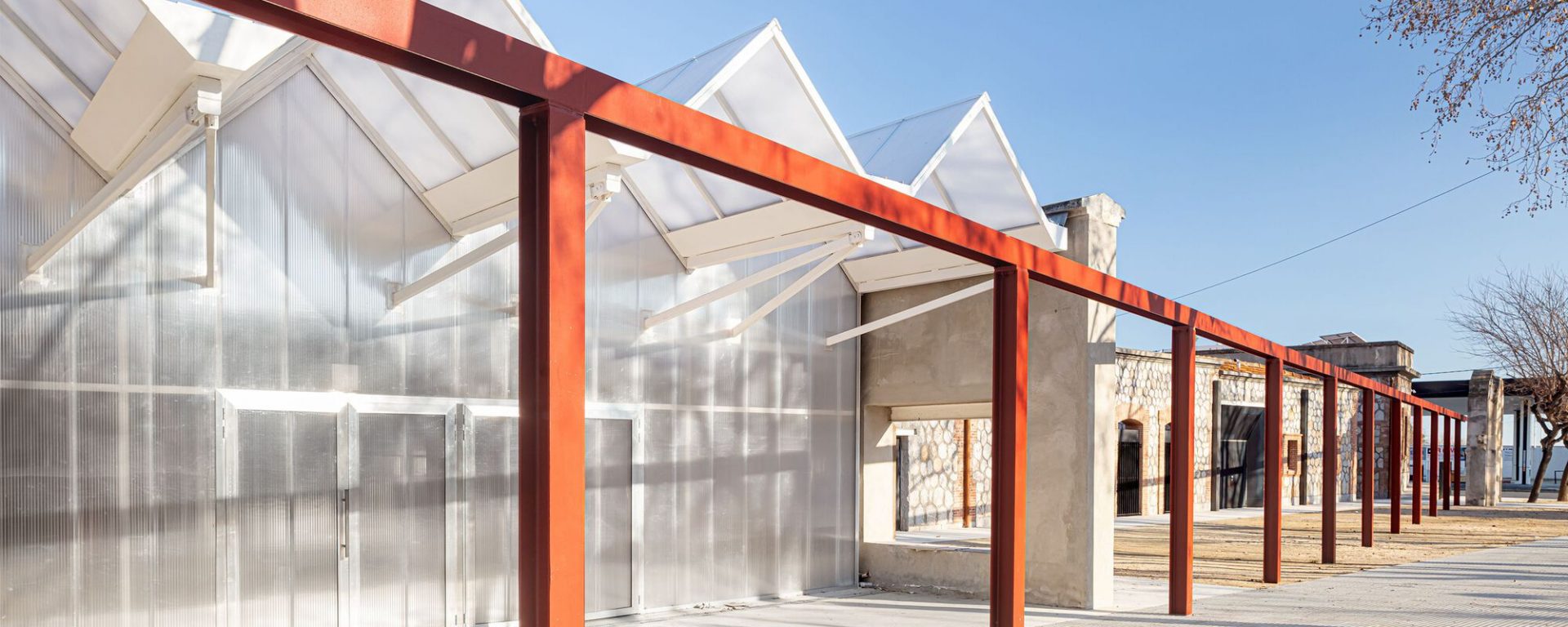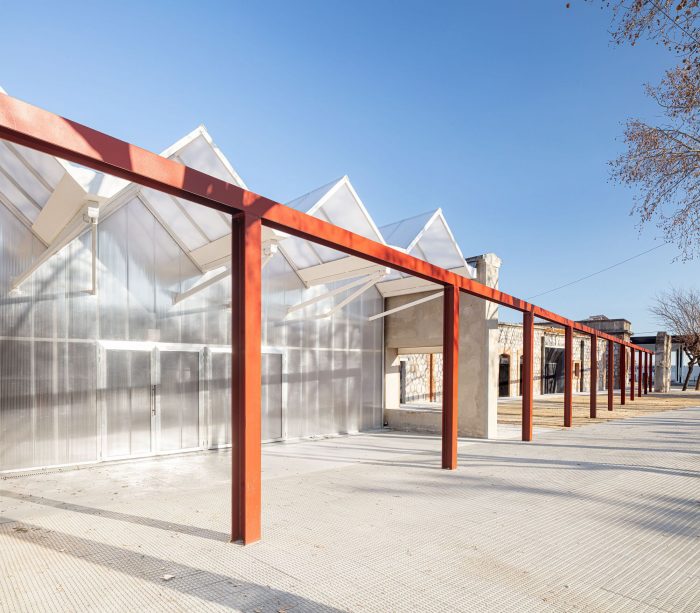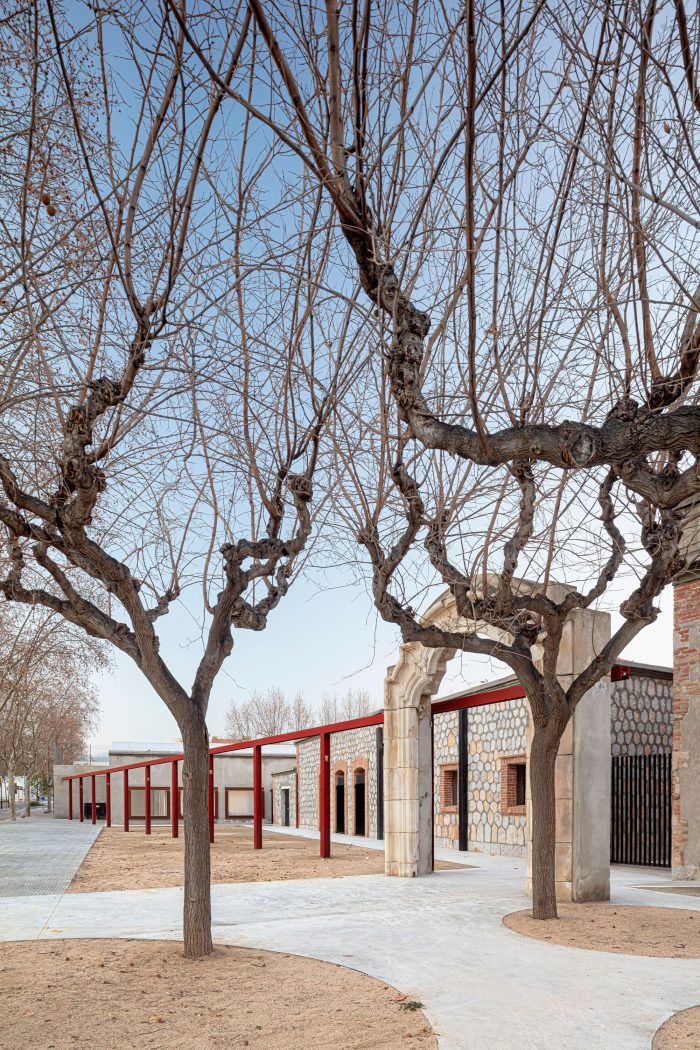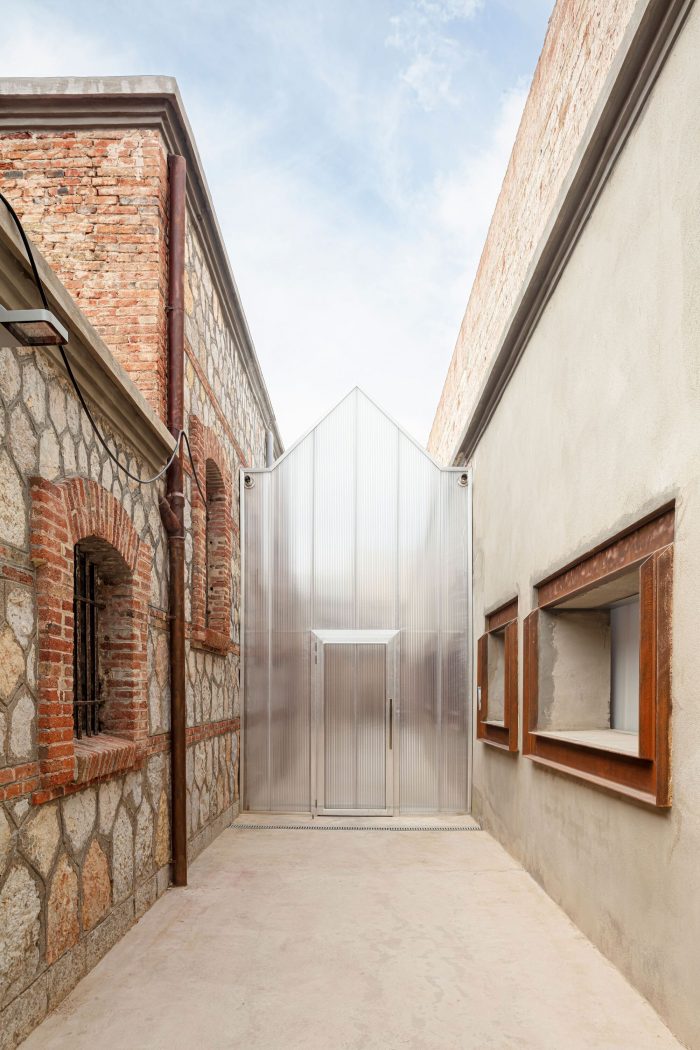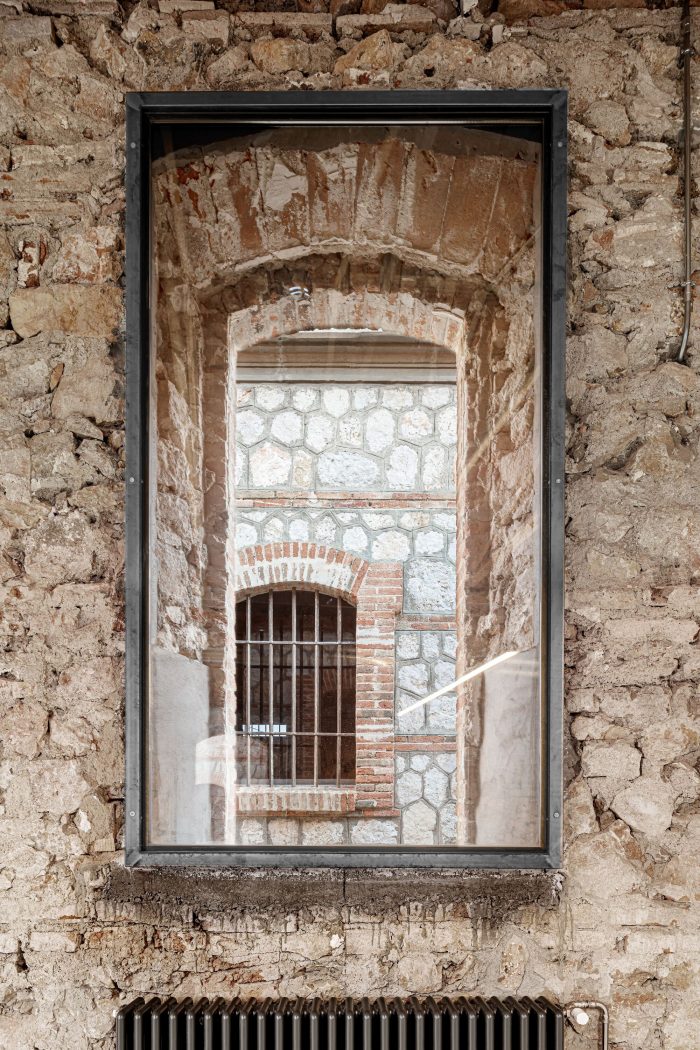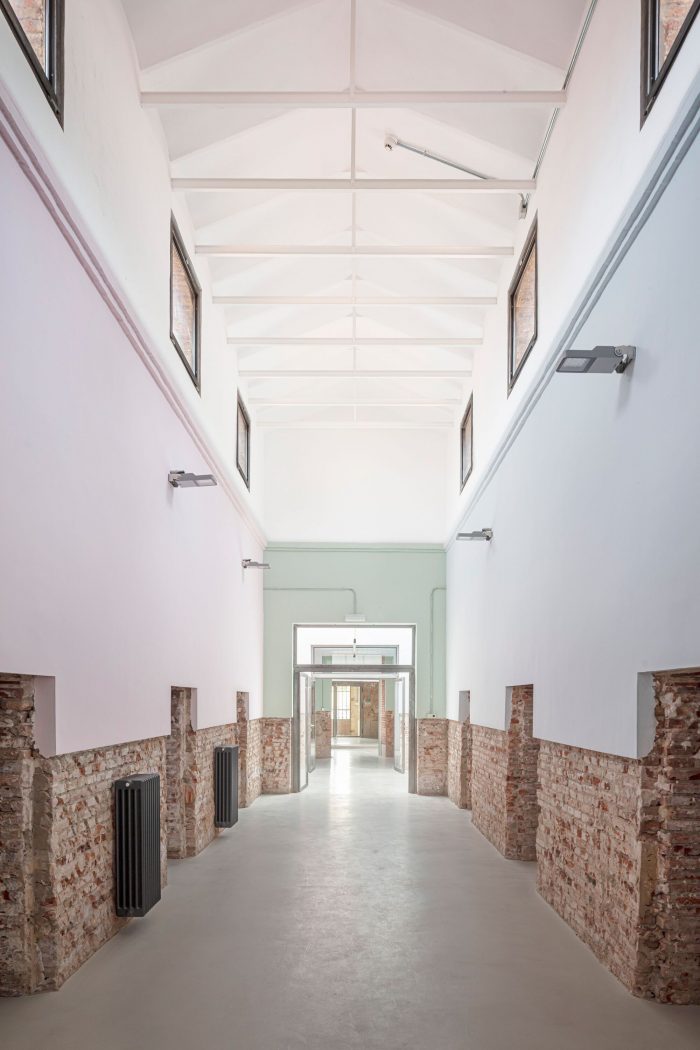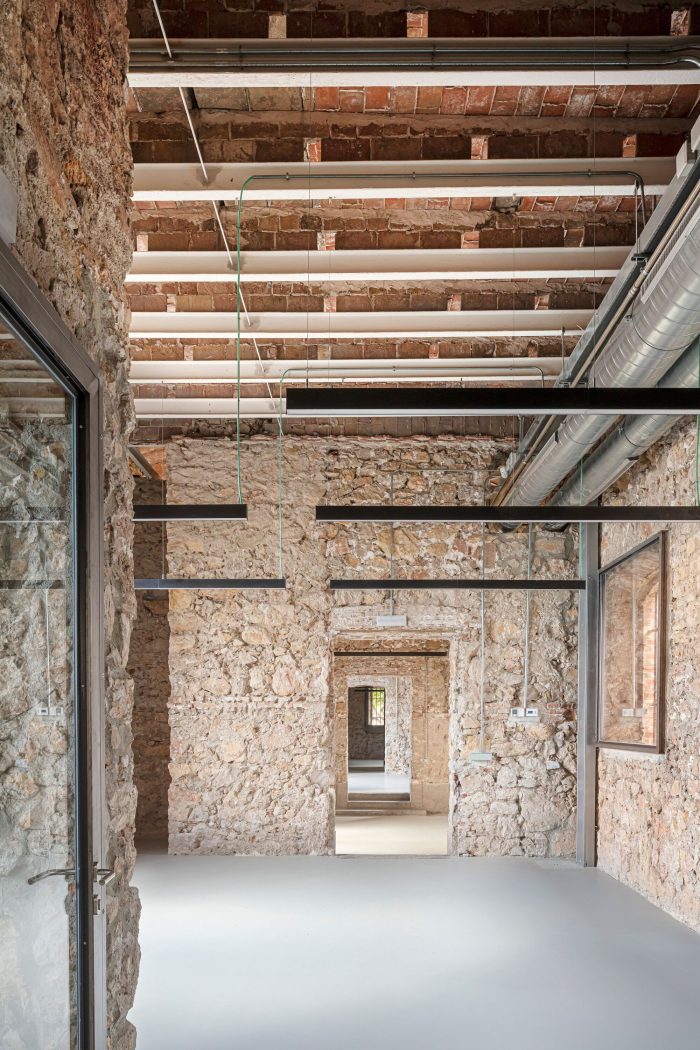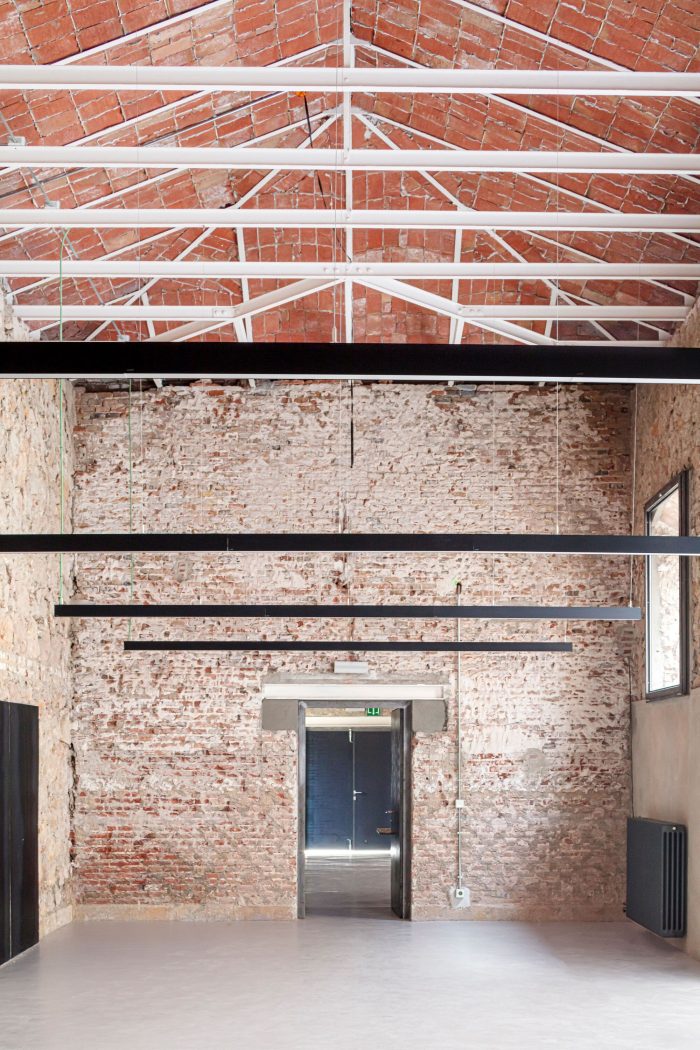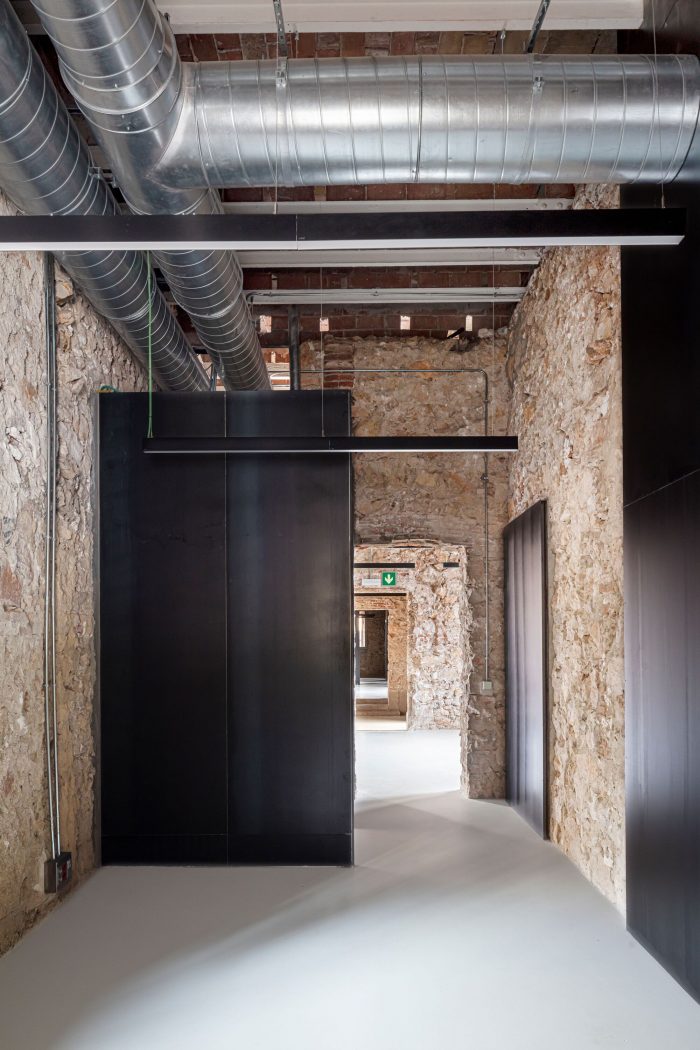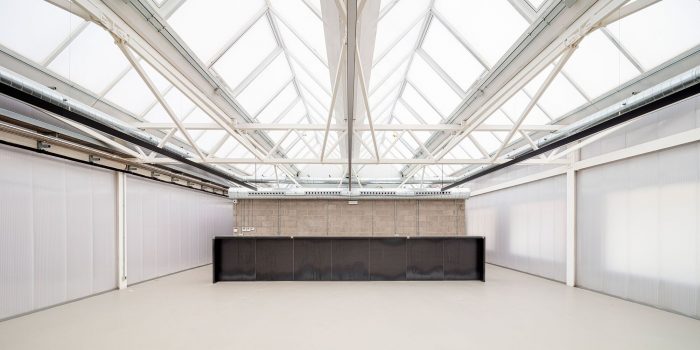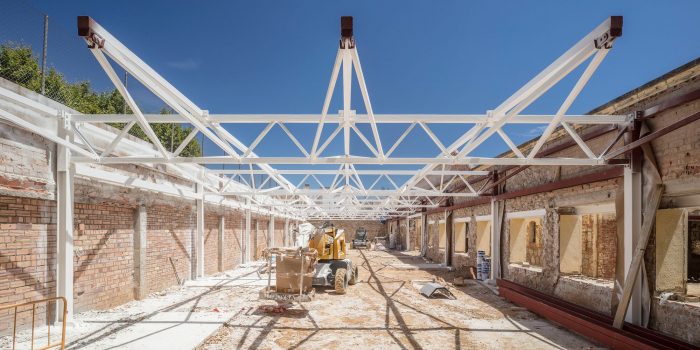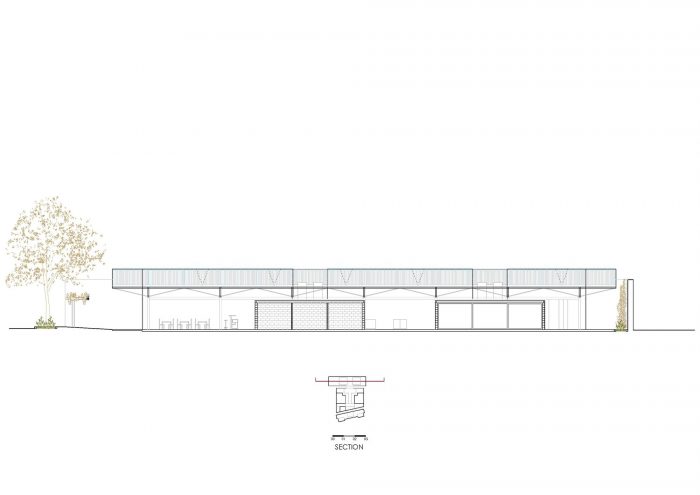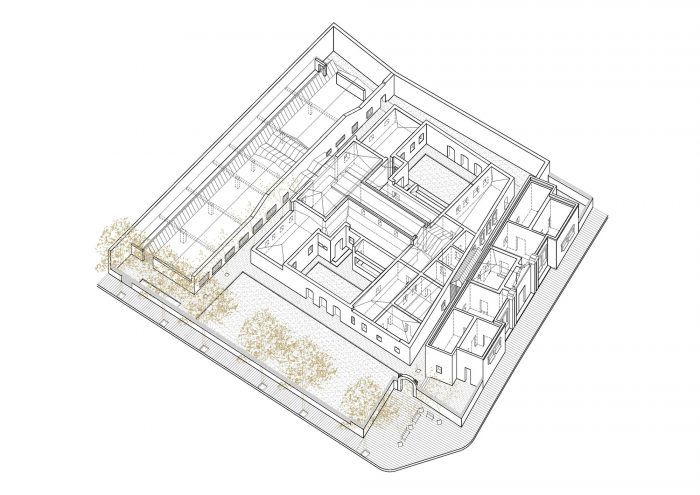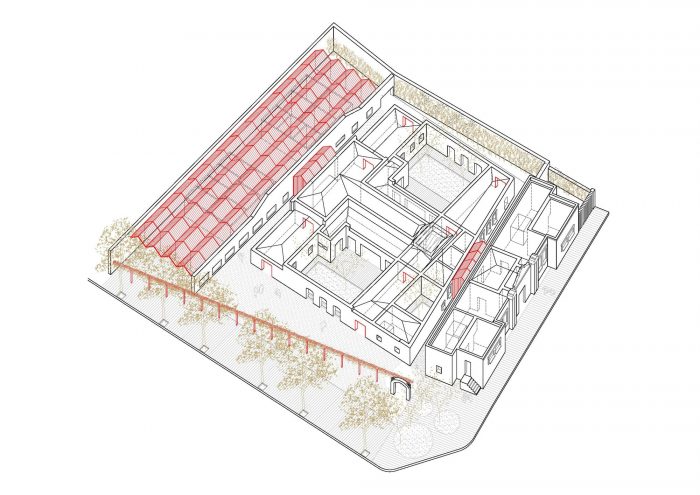El Roser社会中心位于Reus的旧监狱内,该建筑被列为具有地方意义的文化资产,并被列入加泰罗尼亚的建筑遗产目录。该设施是西班牙的一个创新项目。它包括一个无家可归者的庇护所、一个施食处和一个社区空间,汇集了该市所有的社会服务,这使它成为同类的第一个综合设施。
El Roser Social Centre is laid out in the old prison in Reus, a building listed as a Cultural Asset of Local Interest and included in the Inventory of Architectural Heritage of Catalonia. The facility is an innovative program in Spain. It comprises a shelter for the homeless, a soup kitchen, and a community space, bringing together all the social services of the city, which makes it the first comprehensive facility of its kind.
该提案是一个转变的转变。这座建于1929年的监狱在1979年被改造成了一所学校。这个早期的干预被作为项目的基础,在这个项目中,不同的时间层在选择过程中相互对话,显示出隐藏的建筑层,并引起人们对其各种转变的关注。该项目尊重并恢复了原建筑,揭示了其结构和以前隐藏的建筑类型,以唤起一种紧缩的形象。
The proposal is the transformation of a transformation. The prison, built in 1929, was transformed into a school in 1979. This earlier intervention is taken as the basis for a project in which the various time strata dialogue with each other in a selection process that shows the concealed construction layers and draws attention to their various transformations. The project respects and recovers the original building, revealing its structure and the construction typology of the time, previously hidden, in order to evoke an image of austerity.
干预在不同的规模上发挥作用。首先,在新的更加空灵、轻盈、结构性的元素与现有结构的构成和立体矿物材料之间建立了一种辩证关系。然后,围绕两个院子布置的H型平面图的几何形状被赋予了新的开口,以创造视线和帕拉第奥风格的渗透性,标志着封闭空间的结束。建筑内部的解释、功能和路线被重新评估,就像它们在城市层面一样,改变了它与周围环境的关系。
The intervention works at different scales. Firstly, a dialectic is established between the new more ethereal, light, tectonic elements, and the composition and stereotomic mineral materials of the heavier existing structure. Then the geometry of the H-shaped floor plan laid out around two courtyards is given new openings to create lines of sight and a Palladian-style permeability that marks the end of closed spaces. The interpretation, functioning, and routes around the building’s interior are reassessed, as they are at the urban level, changing its relationship with the immediate environs.
监狱的入口过去是通过一个具有纪念意义的门洞从街上进入,但这个最新的提案取消了监狱建筑院子周围的墙,把它变成一个公共空间,向城市开放,让路人通过其立面的连续性来识别这个设施。一个细长的钢结构是一种姿态,让人想起现在不存在的墙,同时将三个不同的历史时期穿插在一起。反过来,对纪念性门洞的保护也见证了那堵缺失的墙,并增强了该设施的遗产价值。在更大的家庭规模上,窗户和湿润区域等元素被切入,加强了重写本的概念。
Entrance to the prison used to be from the street via a monumental doorway with minimum pavement space, but this latest proposal eliminates the wall around the yard of the prison building, turning it into a public space, open to the city, that lets passers-by recognize the facility by the continuity of its façades. A slender steel structure is a gesture that recalls the now-absent wall, at the same time threading together three different historical periods. In turn, the conservation of the monumental doorway bears witness to the missing wall and enhances the facility’s heritage value. At a more domestic scale, elements such as windows and wet areas are introduced at a tangent, reinforcing the idea of palimpsest.
Architects: Gallego Arquitectura, Josep Ferrando
Area : 1323 m²
Year : 2022
Photographs :Adrià Goula
Architects : Josep Ferrando, David Recio, Xavi Gallego
Team : Alex Font, Arnau Sumalla, Ilaria Caprioli, Albert Chavarria, Adrià Maldonado, Maristella Pinheiro, Clara Ebert
Structures : Calmat
Envelope : XMADE
Energy Efficiency : Aiguasol
Quantity Surveyors : BIM Arq Eng + ASC-Arquitect
Constractor : Vesta
City : Reus
Country : Spain

